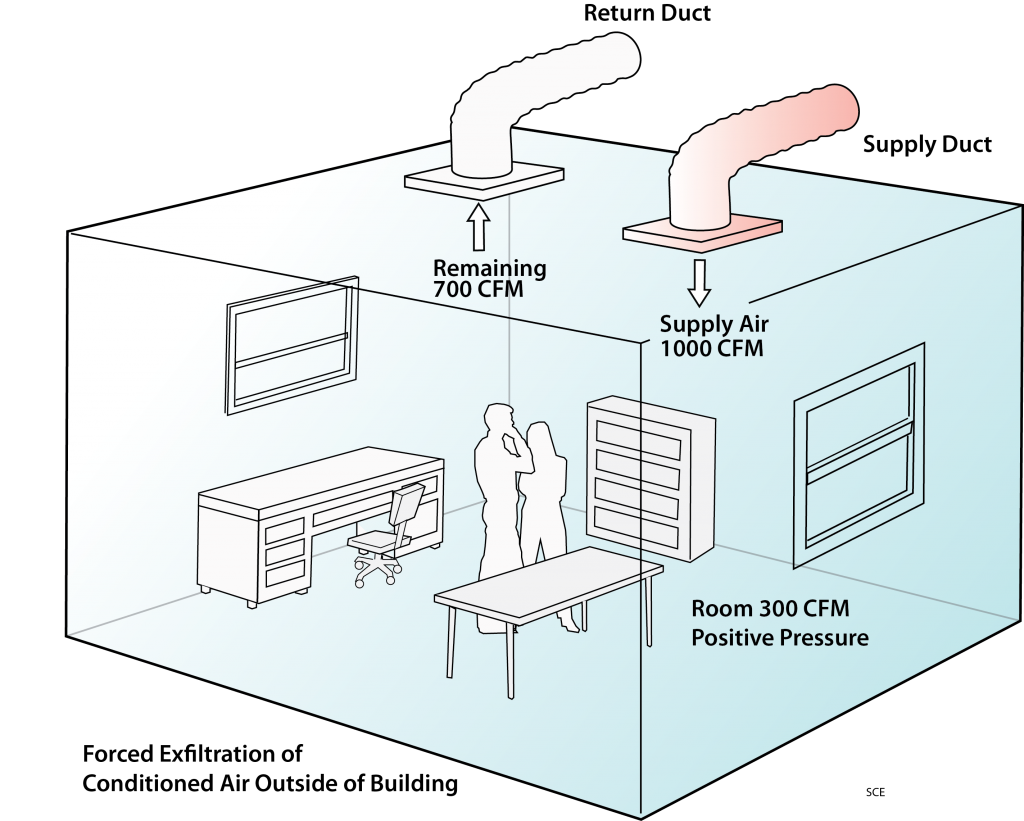Around the country, many code changes require Duct Air Leakage Testing; however, these are currently the exception and not the rule.
Most codes will allow up to 10% leakage and only require high and medium-pressure ductwork testing. Federal construction standards, as outlined by the UFGS, typically also require testing low-pressure duct systems.
Ultimately, it’s up to the mechanical design team to specify more stringent standards regarding allowable duct leakage and which systems to test.
First Steps to DALT
A few steps to commercial DALT start long before the testing apparatus is physically connected to the ductwork.

First, you need to determine the air duct leakage class for the ductwork. You typically derive the air duct leakage class from the SMACNA Air Duct Leakage Test Manual and/or SMACNA Duct Construction Standards. SMACNA also has a smartphone app you can use.
The first step is to determine the allowable duct leakage. The design mechanical engineering team typically does this based on the SMACNA Air Duct Leakage Test Manual.
Following is a breakdown of the steps necessary for doing commercial duct leakage testing and who should be responsible for that work:
Conducting Commercial Duct Air Leakage Testing:
- Step One: Determine the Surface Area Square Footage of the Duct to be Tested
- Step Two: Determine the Leakage Class and Allowable Leakage
- Step Three: Determine the Test Pressure
- Step Four: Isolate the Area of Duct to be Tested
- Step Five: Pressurize the Duct
- Step Six: Compare the Orifice Pressure Drop to Manufacturer’s Chart
- Step Seven: Plot Actual Leakage
- Step Eight: Compare Allowable Leakage to Actual Leakage
- Step Nine: Pass or Fail the section of Duct
- Step Ten: Complete Final Report.
The first three steps are the design team’s responsibility:
- Step One: Determine the Surface Area Square Footage of the Duct to be Tested
- Step Two: Determine the Leakage Class and Allowable Leakage
- Step Three: Determine the Test Pressure.

The next step is the Mechanical Contractor’s responsibility:
- Step Four: Isolate the Area of Duct to be Tested
Depending on how the specifications are written, the next step may also fall upon the mechanical contractor to perform with the TAB team to verify and witness, then sign off on. Or it may be the direct responsibility of the TAB contractor to complete.
When specifications dictate that the TAB firm is to witness DALT Testing, best practices are that the TAB firm lends the Mechanical Contractor the DALT testing machine. AFTER the Mechanical confirms DALT passes, DALT Testing is scheduled with TAB & Commissioning Agent (CxA)/Owner’s representative, etc.
This process will save ALL parties time and money.
- Step Five: Pressurize the Duct
- Step Six: Compare the Orifice Pressure Drop to Manufacture’s Chart
- Step Seven: Plot Actual Leakage
- Step Eight: Compare Allowable Leakage to Actual Leakage.
Click Below for the Next Page:













Recent Comments